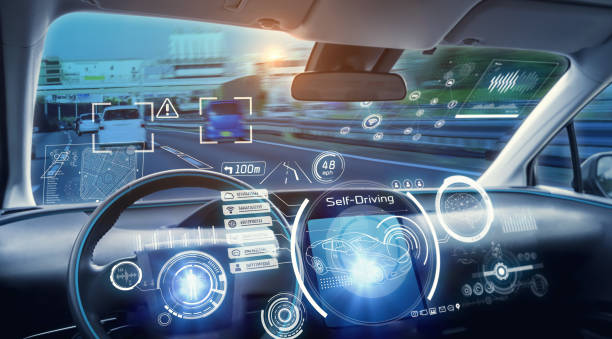Holograms in the Driver's Seat: The Future of Automotive Displays
Imagine cruising down the highway, your eyes fixed on the road ahead. Suddenly, a shimmering, three-dimensional image materializes on your windshield, displaying your speed, navigation directions, and real-time traffic updates. This isn't science fiction – it's the cutting-edge world of holographic displays in automobiles. As we delve into this groundbreaking technology, we'll explore how it's set to revolutionize the driving experience, enhance safety, and push the boundaries of automotive design.

The first attempts at implementing holographic displays in cars were rudimentary, often limited to simple head-up displays (HUDs) that projected basic information onto the windshield. These early systems were plagued by issues such as poor visibility in bright sunlight and limited viewing angles. However, advancements in laser technology, optical systems, and computational power have paved the way for more sophisticated holographic displays that can create true three-dimensional images floating in mid-air.
How Holographic Displays Work in Cars
At the heart of automotive holographic displays lies a complex interplay of optics, lasers, and advanced algorithms. Unlike traditional displays that use a flat screen, holographic systems create the illusion of a three-dimensional image by manipulating light waves. This is achieved through a combination of laser projection, diffractive optical elements, and spatial light modulators.
The process begins with a high-powered laser that emits coherent light. This light is then split into multiple beams, each carrying different information about the image to be displayed. These beams are directed through a series of optical components that shape and modulate the light. Finally, the beams converge to create a three-dimensional interference pattern in the air, which our eyes perceive as a solid, floating object.
One of the key advantages of this technology is its ability to create images that appear to be at different distances from the viewer. This depth perception allows for more intuitive display of information, with critical data appearing closer to the driver’s line of sight while less urgent information can be positioned further away.
Enhanced Safety and Driver Assistance
The implementation of holographic displays in vehicles has the potential to significantly enhance driver safety. By projecting crucial information directly into the driver’s field of view, these systems reduce the need for drivers to take their eyes off the road. This is particularly important in an age where driver distraction is a growing concern.
Holographic displays can provide real-time updates on road conditions, highlighting potential hazards such as pedestrians or obstacles in the vehicle’s path. They can also integrate with advanced driver assistance systems (ADAS) to provide visual cues for lane departure warnings, adaptive cruise control, and collision avoidance systems.
Furthermore, the three-dimensional nature of holographic displays allows for more intuitive presentation of navigation information. Instead of relying on flat maps or arrow indicators, drivers can see a three-dimensional representation of their route, complete with landmarks and topography, floating above the dashboard.
Design and Customization
One of the most exciting aspects of holographic display technology is its potential to revolutionize automotive interior design. Traditional instrument clusters and infotainment screens often dictate the layout of a vehicle’s dashboard. With holographic displays, designers have much more freedom to create sleek, minimalist interiors.
Holographic systems can project information onto any surface or even create floating displays in mid-air, eliminating the need for physical screens. This opens up new possibilities for customization, allowing drivers to personalize their in-car experience. Imagine being able to rearrange your instrument cluster on the fly or choose from a variety of display themes to suit your mood or driving conditions.
Moreover, holographic technology enables the creation of larger displays without the need for bulky hardware. This is particularly beneficial for augmented reality applications, where information can be overlaid onto the entire windshield, effectively turning it into a massive heads-up display.
Challenges and Future Developments
While the potential of holographic displays in automobiles is immense, there are still several challenges that need to be overcome before widespread adoption becomes a reality. One of the primary concerns is the visibility of holographic images in varying lighting conditions. Bright sunlight can wash out projections, while darkness can cause unwanted reflections. Engineers are working on advanced light management systems and adaptive brightness controls to address these issues.
Another challenge lies in the computational power required to generate complex, real-time holographic images. As vehicles become more connected and autonomous, the demand for processing power will only increase. This necessitates the development of more powerful and energy-efficient onboard computers specifically designed for holographic applications.
Looking to the future, researchers are exploring ways to make holographic displays interactive. Gesture recognition and eye-tracking technologies could allow drivers to manipulate holographic interfaces without physical contact, further reducing distractions and enhancing the user experience.
The Road Ahead
As holographic display technology continues to evolve, we can expect to see it playing an increasingly important role in the automotive industry. From enhancing safety and driver assistance to revolutionizing interior design, holograms have the potential to transform the way we interact with our vehicles.
While it may be a few years before we see fully-fledged holographic systems in mass-market cars, the technology is rapidly advancing. Concept cars featuring holographic displays are already making appearances at auto shows, giving us a glimpse of what the future holds.
As we move towards an era of autonomous vehicles, the role of in-car displays will shift from providing driving information to entertainment and productivity. Holographic technology is perfectly positioned to meet these changing needs, offering immersive experiences that blur the line between the digital and physical worlds.
The journey towards widespread adoption of holographic displays in automobiles is just beginning, but one thing is clear: the future of automotive interfaces is set to be a truly three-dimensional experience.





